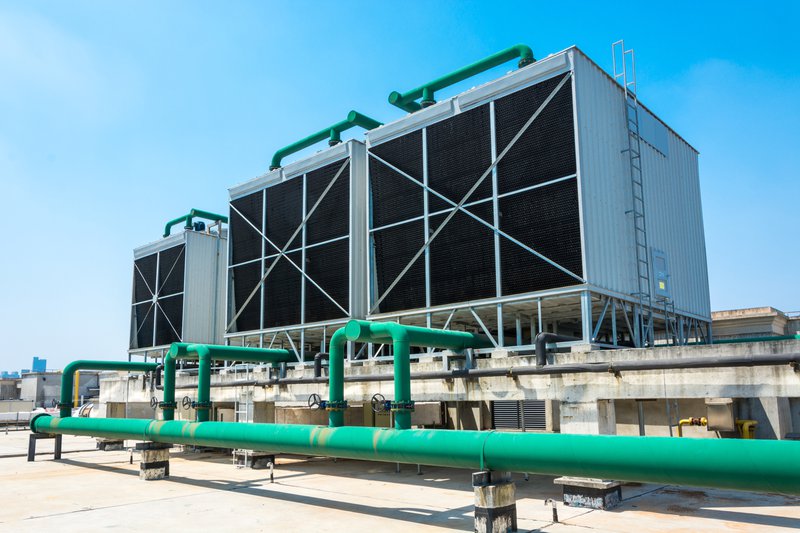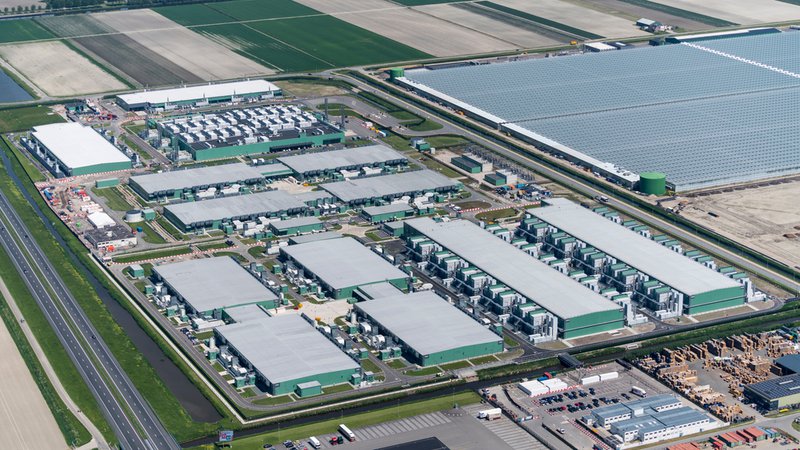Artificial intelligence (AI), Internet of Things (IoT) technology, and other advancements are fueling a need for more data centers. But this need brings challenges. For one, the new data centers we add to power our digital world will also give off excessive amounts of heat. Plus, the technology needed to cool the centers can eat up a lot of resources. This is where solutions like immersion cooling are coming to the rescue.
Immersion cooling submerges computer hardware, such as server units, in a specially engineered, non-conductive dielectric liquid. The liquid absorbs excess heat to stabilize the hardware within a safe temperature range. Then, the system eliminates the heat by routing it into a heat exchanger.
Data center operators continue to adopt immersion technologies at robust rates, thanks to their many benefits:
- Superior Cooling Efficiency: Dielectric liquids conduct heat more efficiently than air. This enables them to remove more heat from server components and do so with greater speed and efficiency.
- Energy Savings: Immersion systems use significantly less electricity and water than their competing counterparts. These resource savings are critically important to data center operators who must balance cooling needs with sustainable energy consumption.
- Space Optimization: In most data centers, space is at a premium. Immersion cooling systems take up relatively little room and don’t need elaborate ductwork or extensive site retrofitting. They help reduce and control the data center’s spatial footprint while making the most of the available facilities.
Data center operators are increasingly attuned to these advantages, and immersion systems are becoming more common. Even better, the year ahead seems poised to deliver some exciting advancements.
The Current State of Immersion Cooling
Current immersion cooling technologies share several defining features. First, they use specialized dielectric coolant fluids. These fluids don’t conduct electricity and won’t damage sensitive computer components.

Hardware is placed in specially designed fluid-filled tanks or other engineered enclosures and then fully immersed in these fluids. Monitoring tools and control systems track temperatures and internal conditions. They then generate reports and alerts that technicians can use to maintain system safety.
These foundational elements form the basis of current approaches to immersion cooling. Of course, there are some variations. Single-phase immersion cooling is a common and widely used example.
In single-phase cooling systems, dielectric fluids absorb heat from immersed computing components. To prevent these liquid coolants from reaching their boiling point and changing phases into gas, single-phase systems deploy a heat exchanger mounted in a cooling distribution unit. This exchanger works to keep the fluid cool enough for it to retain its liquid form, which simplifies the system and improves its operational efficiency.
Immersion Cooling Fluids
Another variation extends to the different fluids used in immersion systems. These fluids come in two main classes: engineered fluids and oils.
Engineered fluids primarily use fluorocarbons, hydrofluoroethers, or perfluoropolyethers. In general, these fluids offer high levels of stability. They’re also compatible with a broad variety of systems and can even be customized.
Oil-based cooling fluids include synthetic, mineral, and biological products. Like engineered fluids, oil-based fluids have high heat capacities and help distribute heat evenly to prevent hot spots. However, they tend to function best within narrower temperature ranges and often have performance limitations in extreme temperature ranges. Many are also derived from fossil fuel sources, which introduces environmental and sustainable energy concerns.

Important Considerations for Current Immersion Cooling Technologies
While immersion cooling offers several major advantages over legacy technologies, data center operators must also consider multiple factors. For instance, immersion cooling systems require significant up-front investments. But over the long term, data center operators can recoup those costs (and then some) in the form of efficiency improvements and electricity savings. Still, you’ll need to account for the initial costs when you budget.
Additional factors to plan ahead for include:
- Maintenance: The coolant fluids used in immersion systems require continuous monitoring and regular replacement. You’ll need to train technicians who understand how to test and change coolant fluids, or hire ones that already know.
- Availability: Immersion cooling is still a growing field. Depending on your location, it might take some work to find a local provider with the technical knowledge and expertise to manage your data center’s conversion.
- Site Logistics: Immersion cooling systems need careful maintenance to guard against leaks. In properly managed systems, leak risks are extremely low. However, you’ll need to commit additional resources to system monitoring to ensure no adverse events occur.
Technological Advancements on the Horizon in 2024
As immersion cooling technologies continue to develop, engineers are making steady progress toward high-impact improvements and refinements. Examples include hardware innovations, directed flow technologies, novel cooling fluids, and new approaches to system design.
Artificial Intelligence
AI technologies are on the cusp of dramatically transforming computing and its capabilities. But AI has intensive hardware and data requirements. This creates some important functional limitations because it consumes data center resources in large quantities. Yet AI could soon prove to be a vital part of the solution to its own problem.
Data centers already use AI and machine learning (ML) technologies for predictive maintenance, regulatory compliance, problem detection, and dynamic forms of system monitoring. The ability of AI and ML technologies to supplement the work of human technicians provides a powerful addition to their management capabilities. They can better manage resources and help data centers maintain an optimal balance of safety and performance.

These features, in turn, support the scalability of the high-density data centers that AI will more often require as it rapidly grows. As data centers increasingly integrate AI, their efficiency and performance capabilities will improve. They’ll then be better able to handle the accompanying rise in data processing and storage needs.
Directed Flow Technologies
One of the clearest examples of immersion cooling’s effectiveness relates to what’s known as directed flow. Also known as enhanced flow, directed flow uses propulsion systems like turbines or jets to force cooling fluids to move faster over the surface of computing components.
As the fluid moves more quickly, it’s able to draw heat out of the immersed computing components at a faster rate. This improves both the efficiency and the effectiveness of the cooling system.
Immersion cooling systems already use directed flow technologies to positive effect. As the benefits of enhanced flow become more apparent, systems will likely incorporate them at the design level with greater frequency. This, in turn, will support further data center performance improvements, especially as engineers develop more precise and efficient directed flow systems.
Novel Immersion Cooling Fluids
Inspired by a desire to produce a sustainable coolant with an environmentally friendly profile, TotalEnergies Fluids has developed a signature line of BioLife Immersion Cooling Fluids. These fluids are manufactured with 100% traceable feedstocks sourced exclusively through the reuse, recycling, and regeneration economy. As a result, BioLife Immersion Cooling Fluids deliver the same elite performance as coolants made from natural or synthetic hydrocarbons but without the associated environmental impacts.
The BioLife fluid line is fully certified under the ISCC PLUS sustainability certification program. It also offers outstanding safety and stability profiles, very low viscosity, and comprehensive computer hardware compatibility.
All BioLife Immersion Cooling Fluids are approved for use in Green Revolution Cooling (GRC) systems. Visit the GRC ElectroSafe Fluid Partners page for more information.
Technology-Specific System Design
IT vendors have started to integrate immersion cooling into data centers at the design level. They’ve also engineered new ways to convert and retrofit existing data centers to more readily adopt immersion technologies. These advancements even extend to the level of computing hardware, which has historically been designed with air-based cooling in mind.
Hardware manufacturers have long followed a standard practice of grouping computing components that tend to generate the most heat in a narrow strip of internal space. This is done to facilitate the rapid movement of forced air over those specific components, which theoretically helps keep them cooler.
However, manufacturers are increasingly reconfiguring their designs to separate those high-heat components as much as possible. This is being done under the assumption that the servers will be cooled through immersion technologies. The physical separation of the system’s hottest components generates lower overall levels of ambient heat. As a result, the immersion cooling system can more readily absorb and eliminate that heat.
Immersion Cooling Industry Trends and Projections
As a whole, the industry for immersion cooling technology is expected to continue growing. A demand for more energy-efficient cooling solutions is behind the growth.

Growth Forecasts
As immersion cooling technologies continue to advance, so does its market share. Citing a projected 2024 global market value of approximately $780 million, Mordor Intelligence projects the value of the immersion cooling industry to soar to $2.34 billion by 2029. If accurate, the increase would amount to a stunning compounded annual growth rate (CAGR) of 24.42% over that five-year period.
The Mordor Intelligence report cites several critical factors driving the growth:
- The COVID-19 pandemic was a major catalyst for the initial spark of immersion cooling growth that occurred during the early 2020s.
- Thanks to advancing technologies, immersion cooling has become more scalable, less costly, and easier to maintain.
- Data centers have increasingly sought sustainable energy solutions that will lower their carbon footprints and diminish their reliance on and consumption of resources like water and electricity.
Mordor Intelligence believes North America will emerge as both the largest and fastest-growing market for immersion cooling technology during the remainder of the 2020s. Notably, the analytics agency cites Green Revolution Cooling (GRC) as one of the burgeoning industry’s major players.
Additional Growth Drivers and Catalysts
Industry analysts expect two notable growth drivers to power the continued adoption of immersion cooling: cryptocurrency mining and sustainability.
Cryptocurrency Mining and Blockchain Technology
With cryptocurrency values remaining both elevated and volatile, the asset class has drawn sustained interest from both investors and traders. Data-intensive mining operations work around the clock to meet the strong global demand for cryptocurrency supply.
Immersion cooling offers an excellent solution to the accompanying challenges. These extend more broadly to the blockchain technologies that are becoming more common as the push for internet decentralization intensifies.
Sustainability
In 2022, Techspot estimated that data centers combine to consume more than 205 terawatt hours of electricity each year. That’s more than the annual electricity consumption of countries like Denmark, Ireland, and South Africa. According to prevailing growth trends, the global technology industry could account for as much as one-fifth of worldwide energy consumption by the dawn of the 2030s.
These eye-popping numbers have triggered alarm among the fast-rising number of technology industry players concerned with the sustainability of data center operations. Since immersion cooling can remove heat from servers up to 1,200 times more efficiently than air cooling, it has drawn obvious attention as a sustainable solution.
In fact, a 2023 study published in Energy Informatics found that immersion-cooled data centers use about 50% less energy than their conventional air-cooled counterparts. This gives immersion cooling a growth-driving sustainability advantage.
Challenges and Solutions
Technology is dynamic by nature. As such, new challenges often appear almost as soon as existing ones are meaningfully addressed. This is certainly the case with data center cooling, especially in the impending age of AI.

AI, ML, and advanced analytics are all highly intensive applications with respect to their data processing and storage needs. They already put an increased strain on conventional server racks, forcing them to generate more heat and consume more resources and electricity than ever.
To address these processing needs, data centers are increasingly moving toward high-density models. High-density data centers pack greater concentrations of computing power into smaller and smaller spaces. They represent a confluence of careful, innovative design and hardware engineering ingenuity.
Immersion cooling is critical to data center density, as it demands far less space than other cooling options. These cooling systems enable data centers to pack more computing power into smaller areas, boosting their density capabilities. This also makes it more viable to locate data centers closer to the urbanized areas that drive data processing demand.
Liquid immersion cooling simultaneously reduces the carbon footprints of data centers. In air-cooled data centers, cooling needs account for about 40% of overall energy consumption. This total is far lower in immersion-cooled data centers. So, it’s easy to see why immersion cooling appeals to the rapidly growing number of businesses that want to improve their sustainability profiles.
The Takeaway: Immersion Cooling Has a Promising Future
Despite any perceived challenges, immersion cooling solves many of the pressing logistical, environmental, and performance-related concerns associated with conventional cooling solutions. For instance, it uses far less electricity and fewer water resources. What’s more, its drastically reduced spatial requirements make it suitable for use in the high-density data centers of tomorrow.
Immersion cooling also offers an ideal solution to data center operators who seek a reliable, secure, and effective way to optimize performance and minimize risk. Servers and computing components cooled with immersion methods tend to maintain faster and more efficient performance for longer periods of time. This reduces downtime and helps data center operators comply more readily with the terms of their service-level agreements (SLAs).
GRC is a recognized leader in the fast-growing global immersion cooling market. We provide advanced immersion cooling systems specifically designed for rack-based, modular, and blockchain applications. Contact us today to discuss your data center cooling needs in detail.





